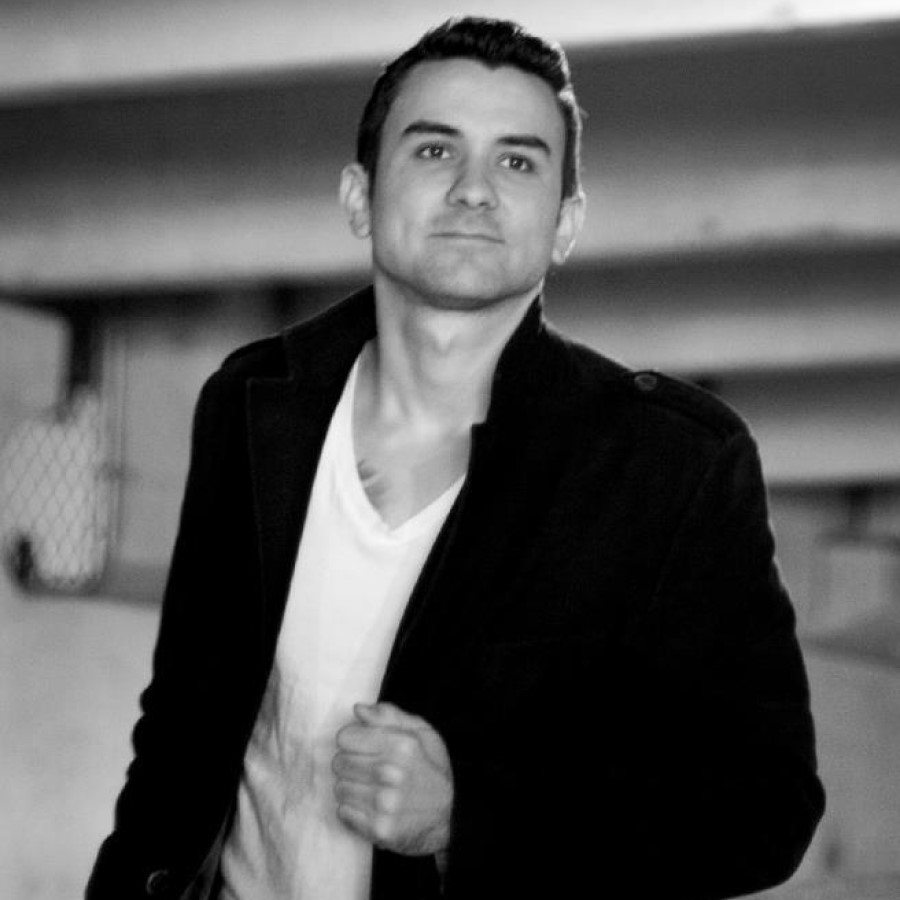
I was captured by the wild abandon and strange gothic lyrics of Pat Berlinquette’s “Cavern Song.” Turns out, there’s a somber story behind the quirky foot-tapper. In our conversation, Berlinquette spoke about how caring for his dying mother informed his songwriting process — plus, he dishes about some Doors-related gossip he learned from The Lovin’ Spoonful’s John Sebastian.
Does your album have an overarching theme?
My mom started dying in October of last year. So I moved back into the house I grew up in and helped take care of her. To keep myself from going crazy, I’d slip away now and then upstairs and write songs. Over the course of a few months, I racked up about sixty-something of them. Eventually narrowed them down to eleven. Those eleven songs ended up on the record.
Someone from hospice told me to start training myself to interpret metaphor, because by that point my mom was speaking in just that. Saying things like “help me swim against the tide,” or “I want to go home” (though we were there already). Some of the things she said ended up as lyrics in the songs. Someone might say that is a morbid or exploitive exercise, but these songs are inseparable from the dying and grieving processes. So I don’t feel that way. And anyway these are the same cynical folks who believe that dreams aren’t a conduit to the dead, or that the dead man’s visions are hallucinations brought on by dehydration or medicine, and so I don’t put much weight on anything they say.
Do you start off with the music or lyrics first? Why?
The music would loop in my head until I was able to jog upstairs and record it onto my phone. Something in my brain or soul was insulating me with music from the ugliness of what was happening. Sometimes I’d be sitting next to her, trying to be present as I could, but I’d have my soul pulled away by the music until I wasn’t really in the room anymore. It made me sick with myself, but I know that’s not the right way to think about it now. I’d add in the lyrics very last, but I had an idea of the pacing of the vocal line—the numbers—early.
When it became too much to be slipping upstairs, I’d pack my car with a mic and amp and guitar, and drive to the north shore of Long Island, to this vacant house I used to live in. I’d set up there, and record the songs on my phone in that house. Sometimes I’d just be finished setting up, and be halfway through the first song, when I’d get a call from the hospice nurse telling me I had to rush back because my mom was calling for me.
Who would you love to collaborate with? Why?
I like what Cut Worms is doing. I like what he did on “nobody lives here anymore.” I think our styles would gel nicely if we ended up in the same room and our voices would fly right past each other in a good way.
Have you ever been star-struck when playing with a musician?
John Sebastian of The Lovin’ Spoonful played harmonica on three of the songs on this record. He did everything in one take. It took about 30 minutes for him to lay it down and then he wanted Japanese food so we walked into town, me, Kenny Siegal, and him, walking single file over a bridge. I couldn’t hear anything because of the wind.
John snuck in these tall boy beers for us into the restaurant under his jacket and we drank them and he told us some stories. I didn’t say much.
There was a point where Jim Morrison couldn’t get it together in the studio. Jim was doing everything at the studio except singing. Some suit called up John and asked if he could fly down and straighten Jim out. John agreed, and joined The Doors at the studio in California. The result of that session is the harmonica you hear on “Roadhouse Blues,” which is John’s. Not many people know that.
John wanted ice cream so we walked back over the bridge in the crazy wind, to the ice cream shop. Then John left.
Tell us about the first song you wrote.
I had just come home from a hospice in Long Island. The hospice had a rule that if your loved one didn’t die in seven days, he or she would be discharged. I didn’t know exactly what I’d do beyond those seven days, and I didn’t know exactly what I’d do if she died. It was freezing cold and I was in a bad head-space, didn’t care much if I lived or died, and had this mantra I called “final fantasy” bouncing in my head. As in, I’m going to do this dream before I check out, and invest all I have in it, because who cares.
I came home and put down this song, it was the first, and my wife said she could hear the emotion from downstairs. Kenny Siegal, told me that later, too, to focus on the emotion, not on making it pretty, and sing it like I’m singing it for the first time always.
